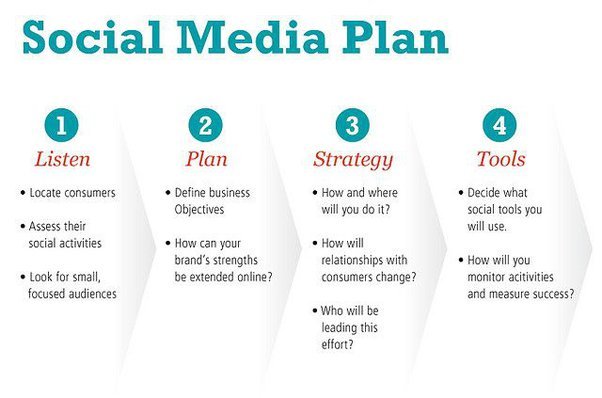Digital Media Planning for Small Businesses
In today's fast-paced digital world, small businesses must leverage every tool available to stand out and compete with larger enterprises. One crucial element of this strategy is effective digital media planning. Digital media planning involves creating a comprehensive approach to marketing through digital channels, ensuring that your business reaches the right audience, at the right time, with the right message. This article will guide you through the essential steps of digital media planning, tailored specifically for small businesses.

Understanding Digital Media Planning
Digital media planning is the process of identifying which digital platforms and tools will best serve your business goals. This involves selecting the right channels, crafting compelling messages, and strategically timing your efforts to maximize impact. For small businesses, this can be particularly challenging due to limited resources. However, with a focused approach, you can achieve significant results.
1. Define Your Goals
Before diving into digital media planning, it’s crucial to define your business goals. Are you looking to increase brand awareness, drive website traffic, generate leads, or boost sales? Clearly defined goals will guide your strategy and help measure success. For instance, if your goal is to drive sales, your digital media plan might focus on targeted ads and promotions.
2. Know Your Audience
Understanding your audience is foundational to any digital media plan. Conduct market research to identify your target demographic's age, gender, location, interests, and online behavior. Tools like Google Analytics, social media insights, and customer surveys can provide valuable data. Knowing your audience helps tailor your content and choose the right platforms to reach them effectively.
3. Choose the Right Channels
Selecting the appropriate digital channels is crucial. For small businesses, it’s often best to start with a few key platforms where your audience is most active. Common channels include:
- Social Media: Platforms like Facebook, Instagram, Twitter, and LinkedIn offer targeted advertising options and organic reach.
- Email Marketing: Building an email list allows direct communication with your audience, fostering relationships and promoting offers.
- Search Engine Optimization (SEO): Optimizing your website for search engines increases organic traffic and visibility.
- Content Marketing: Blogging, video content, and infographics can attract and engage your audience.
- Paid Advertising: Google Ads, social media ads, and display ads can drive traffic and conversions.
4. Develop a Content Strategy
Content is king in digital media planning. Your content strategy should align with your business goals and audience interests. Create a content calendar outlining what type of content you will produce, when, and on which platforms. Types of content include:
- Blog Posts: Informative articles that address your audience’s pain points.
- Social Media Posts: Engaging posts that encourage interaction and sharing.
- Videos: Tutorials, product demos, and behind-the-scenes videos.
- Infographics: Visual content that simplifies complex information.
- Email Newsletters: Regular updates and offers to keep your audience engaged.
5. Budget Wisely
Budgeting is a critical aspect of digital media planning for small businesses. Determine how much you can allocate to each channel and campaign. Consider the cost of content creation, advertising, and any tools or software you might need. Start with a small budget and scale up based on the performance and return on investment (ROI).
6. Implement and Monitor Campaigns
Once your plan is in place, it’s time to execute. Publish your content, run ads, and engage with your audience. However, the work doesn’t stop there. Continuous monitoring is essential to track the performance of your campaigns. Use analytics tools to measure key metrics such as website traffic, engagement rates, conversion rates, and ROI.
7. Analyze and Optimize
Analyzing your results is crucial for refining your digital media plan. Identify what’s working and what isn’t. Are certain types of content performing better? Which channels are driving the most traffic and conversions? Use this data to optimize your strategy. Experiment with different approaches, A/B test your ads, and adjust your budget allocation based on performance.
8. Leverage Digital Tools
There are numerous digital tools available to aid in media planning and execution. Some popular tools include:
- Google Analytics: For website traffic analysis and user behavior insights.
- Hootsuite or Buffer: For social media scheduling and analytics.
- Mailchimp: For email marketing campaigns.
- SEMrush or Ahrefs: For SEO analysis and keyword research.
- Canva: For creating engaging graphics and visual content.
Case Study: Successful Digital Media Planning
To illustrate the effectiveness of digital media planning, let’s look at a hypothetical small business case study:
Business: A local bakery looking to increase online orders and in-store foot traffic.
Goals: Increase brand awareness, drive website traffic, and boost online orders.
Audience: Local residents aged 25-45 who enjoy gourmet baked goods.
Channels: Instagram, Facebook, email marketing, and Google Ads.
Content Strategy:
- Instagram & Facebook: Daily posts featuring mouth-watering photos of baked goods, customer testimonials, and behind-the-scenes content.
- Email Marketing: Weekly newsletters with exclusive discounts, new product announcements, and baking tips.
- Google Ads: Targeted ads promoting online ordering and special offers.
Budget: $500 per month.
Implementation and Monitoring: The bakery uses Hootsuite to schedule social media posts and Google Analytics to track website traffic and conversions.
Results: After three months, the bakery sees a 30% increase in website traffic, a 20% rise in online orders, and a significant boost in social media engagement.
Conclusion
Digital media planning is a powerful tool for small businesses to enhance their online presence and achieve their marketing goals. By defining clear objectives, understanding your audience, choosing the right channels, developing a robust content strategy, budgeting wisely, and continuously analyzing performance, you can create an effective digital media plan. Remember, the digital landscape is ever-evolving, so stay flexible and open to new strategies to keep your business ahead of the competition. With a well-executed digital media plan, small businesses can reach new heights and enjoy sustainable growth.


You must be logged in to post a comment.